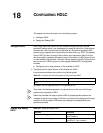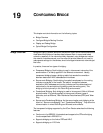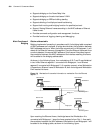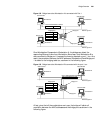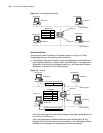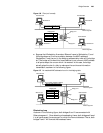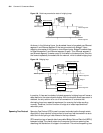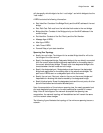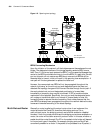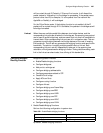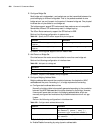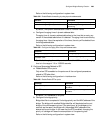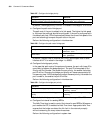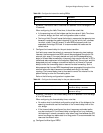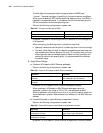Bridge Overview 295
will also specify which bridge to be the “root bridge” and which bridges to be the
“leaf nodes”.
A BPDU contains the following information:
■ Root Identifier: Consists of the Bridge Priority and the MAC address of the root
bridge.
■ Root Path Cost: Path cost from the individual leaf nodes to the root bridge.
■ Bridge Identifier: Consists of the Bridge priority and the MAC address of the
current bridge.
■ Port Identifier: Consists of the Port Priority and the Port Number.
■ Message Age of BPDU
■ Max Age of BPDU
■ Hello Time of BPDU
■ Forward Delay of port state transition
Spanning Tree Topology
■ Specify the root bridge. The bridge with the smallest Bridge Identifier will be the
root bridge of the local network.
■ Specify the designated bridge. Designated bridge is the one directly connected
with the current (subordinate) bridge and responsible for forwarding data to
the current (subordinate) bridge. The path cost via a designated bridge is the
lowest between the leaf nodes and root bridge.
■ Specify the designated port. Designated ports are those on the designated
bridge and responsible for forwarding data to the subordinate bridges. The
path cost of BPDUs sent on a designated port will be the lowest.
■ Specify the root port. Root port refers to the one on the current bridge and
responsible for receiving the data forwarded by the designated bridge.
■ Specify blocked ports. Except the designated ports and the root ports, all other
ports will be blocked and are called blocked ports.
Upon the computation of the minimum spanning tree, the newly generated root
port and designated ports begin to forward packets after a period of forward
delay. After all the bridges on the network accomplish the spanning tree
computation, the network topology will be stabilized and will remain the same
until the network takes changes.
The following figure illustrates the topology of the minimum spanning tree on a
network:



